What is the best way to remove these. I am having difficulty getting the ball joint out. It wont break off or anything. Im also trying to replace the bushings on the LCA cause they are shot. :stare:
hit lca where the ball joint goes in with a metal hammer as hard as you can, it just pop out. theres a video on youtube. its the method i use and it always works.
Another easy and affective method is to jack the knuckle up and put something (I use the handle to my picklefork) between the control arm and the nub on the knuckle and lower the knuckle back down. The balljoint just pops out of the control arm and you don’t risk damaging anything.
Pickle fork…wont do any damage
Go ahead and ignore every other suggestion you’re going to get and just to to Harbor Freight and buy THIS. I bought one in the past year and it’s been a lifesaver. I can’t believe I have spent nearly 15yrs working on Hondas and only recently acquired this tool - literally the best $17 tool investment I’ve made (not just for ball joint tools, but ALL of my tools!) Don’t even bother with pickle forks, hammers, gear pullers…etc - seriously, don’t even waste your time, just get this tool and call it a day, you’ll be glad you did.
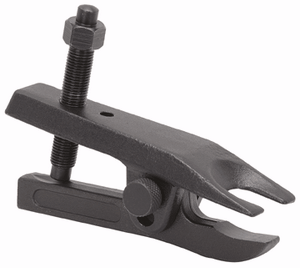
[QUOTE=Colin;2282537]Go ahead and ignore every other suggestion you’re going to get and just to to Harbor Freight and buy THIS. I bought one in the past year and it’s been a lifesaver. I can’t believe I have spent nearly 15yrs working on Hondas and only recently acquired this tool - literally the best $17 tool investment I’ve made (not just for ball joint tools, but ALL of my tools!) Don’t even bother with pickle forks, hammers, gear pullers…etc - seriously, don’t even waste your time, just get this tool and call it a day, you’ll be glad you did.
 [/QUOTE]
[/QUOTE]
woooooooooord? gonna try it.
Nifty tool there… I still don’t like the idea of anything touching the rubber boot, but I do trust it if you say it works.
After getting my hands on a 3lb mini-sledge, hitting the control arm once or twice does the trick typically.
Yup a BFH is what I use to pop the lower ball joint out of the control too! The 3lb sledge is my go-to, lol. That tool does look pretty rad though, might have to try it out
This tool does zero damage to the boot, all the pressure is downward onto the metal, not upward into the joint, opposed to a pickle fork which can wreak havoc on the boot.
Isnt the point of this tool is to help remove the ball joint? So what’s harm in ripping the boot in the balljoint that you’re going to replace?
The goal of the tool is to separate it from the lower control arm, not to press it out of the knuckle.
Not every time you separate the ball joint/control arm is the purpose to replace the ball joint… at least not in my experience.
Hey guys I’ve been using the Craftsman ratchet method for all my swaps and axle changes. Its as easy as the video. Though Colin does suggest a good tool I wouldn’t want to rip my boot doing an axle change especially if I just replaced a ball joint x,xxx miles ago.
Actually today I just replaced my lower ball joint in 30 degree winter weather in the garage (1 year of use and constant creaking squeaking) and hammered in my new Moog ball joint (seems to work fine without a press. Using tricks, like the craftsman ratchet trick, and experience I was able to do this by myself in 1 hr to 1.5 hrs, which is pretty quick if you ask me (thank God nothing was seized or stripped).
Soon I will be doing the other side, OEM Honda ball joints going on 199k is amazing; I hope Moog lasts that long.
Use what method you are comfortable with but let it be known the Craftsman 1/2" ratchet trick works great.
-Although there was this one time I couldn’t get a Civic lower ball joint out with this trick… My 170 lb frame was bouncing so hard on that little civic hub but neither the Craftsman ratchet or the ball joint gave in that fight…
Below are the old Mevotech lower ball joint and the new Moog Problem Solver.
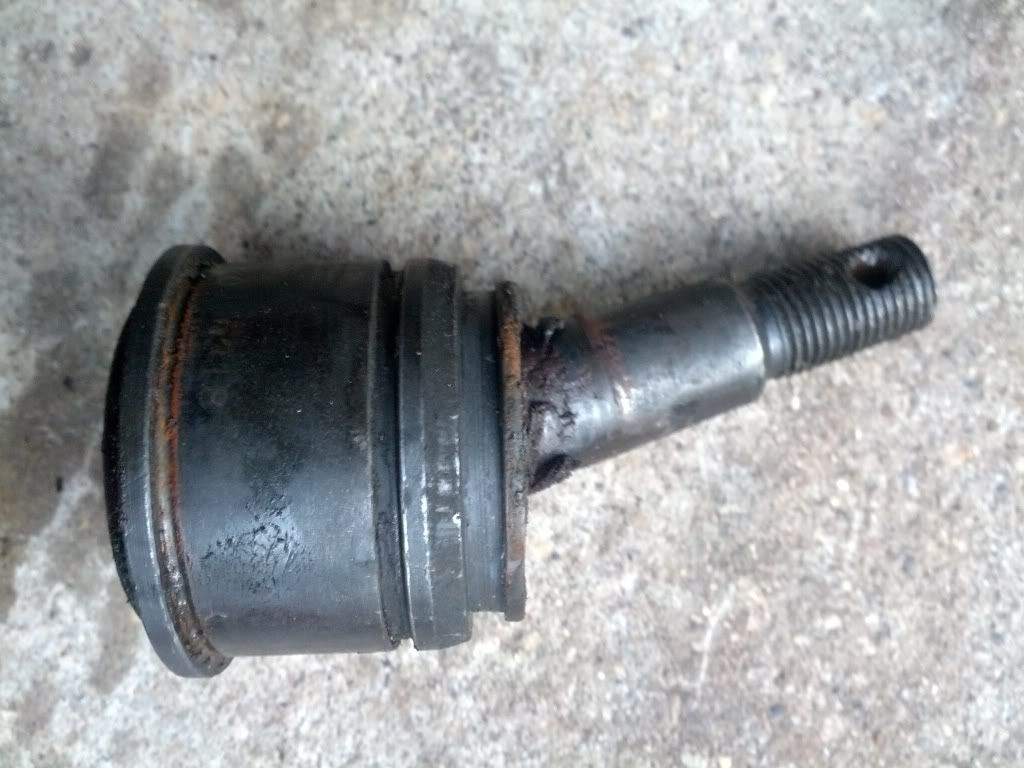
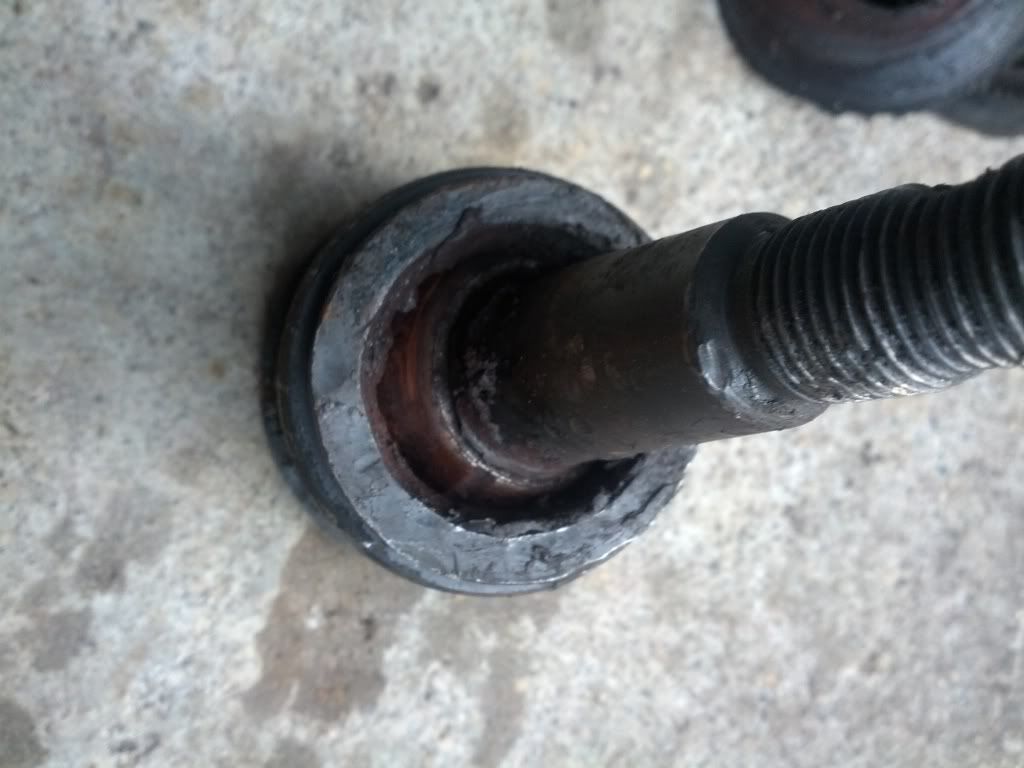
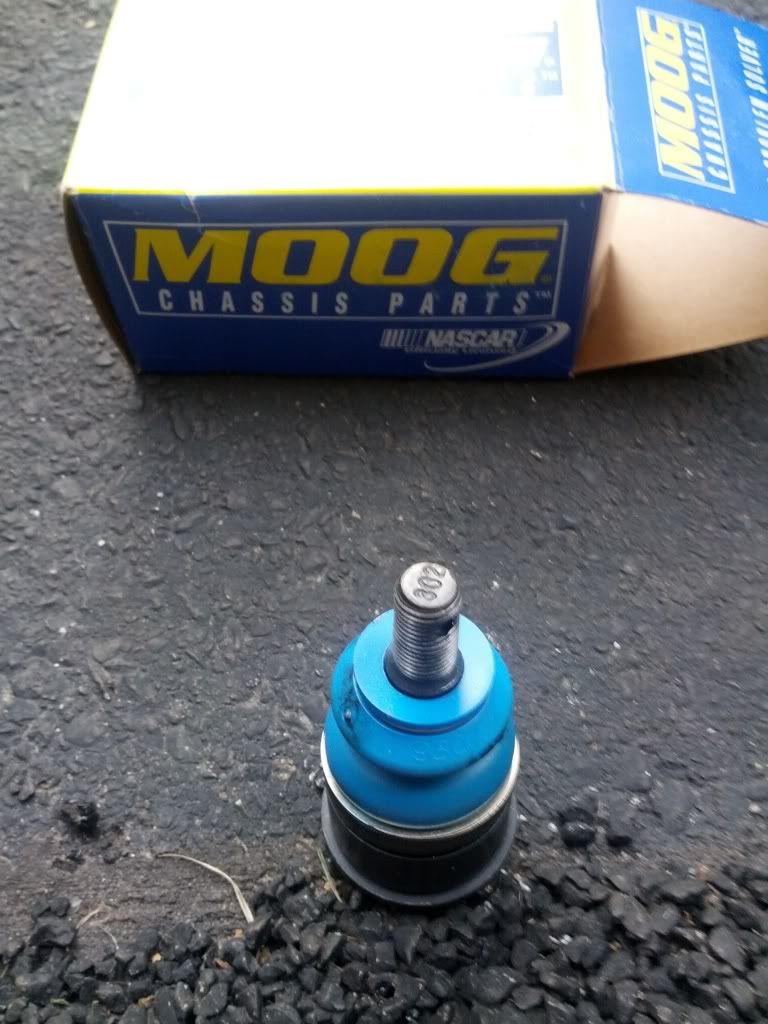
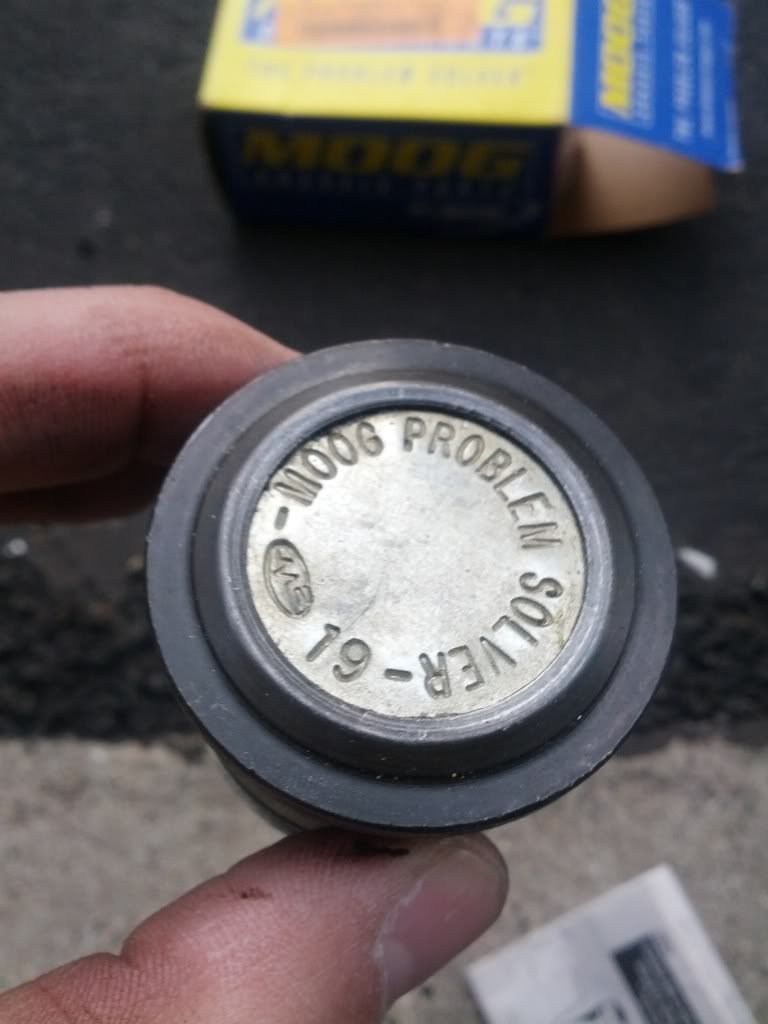
Supposedly it has a “gusher” design to keep it fully lubricated.
NOTE: Just realized that the diagram shows a zerk fitting on top of the joint but there wasn’t any… Hope there was grease in there!
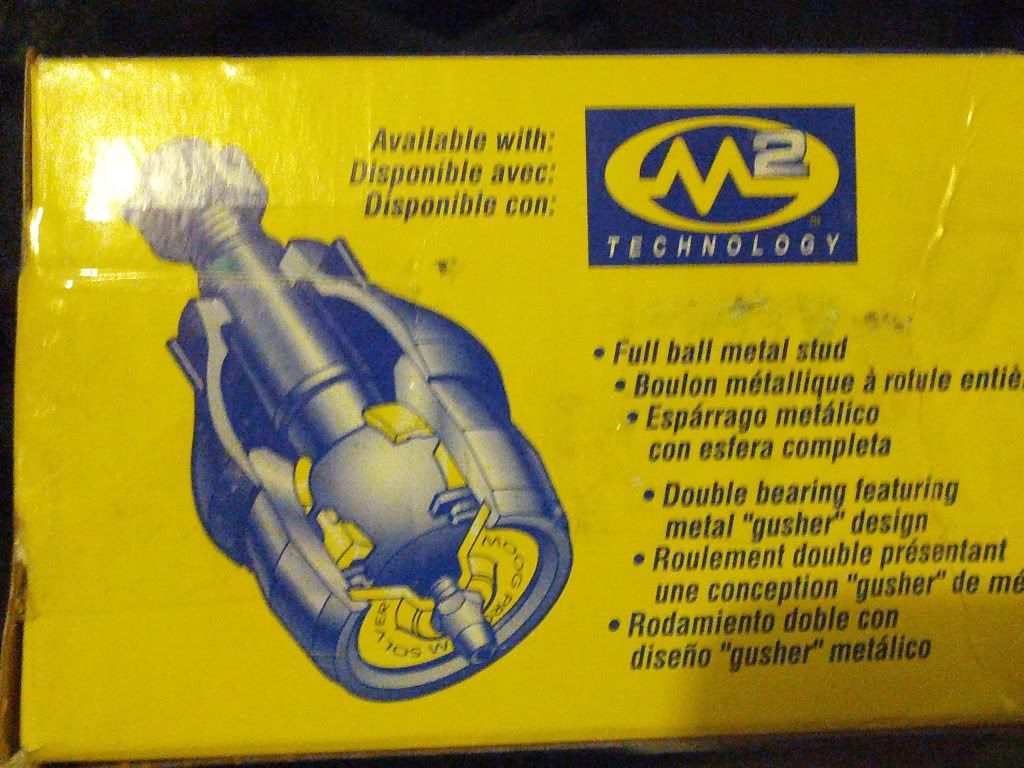
Installed:
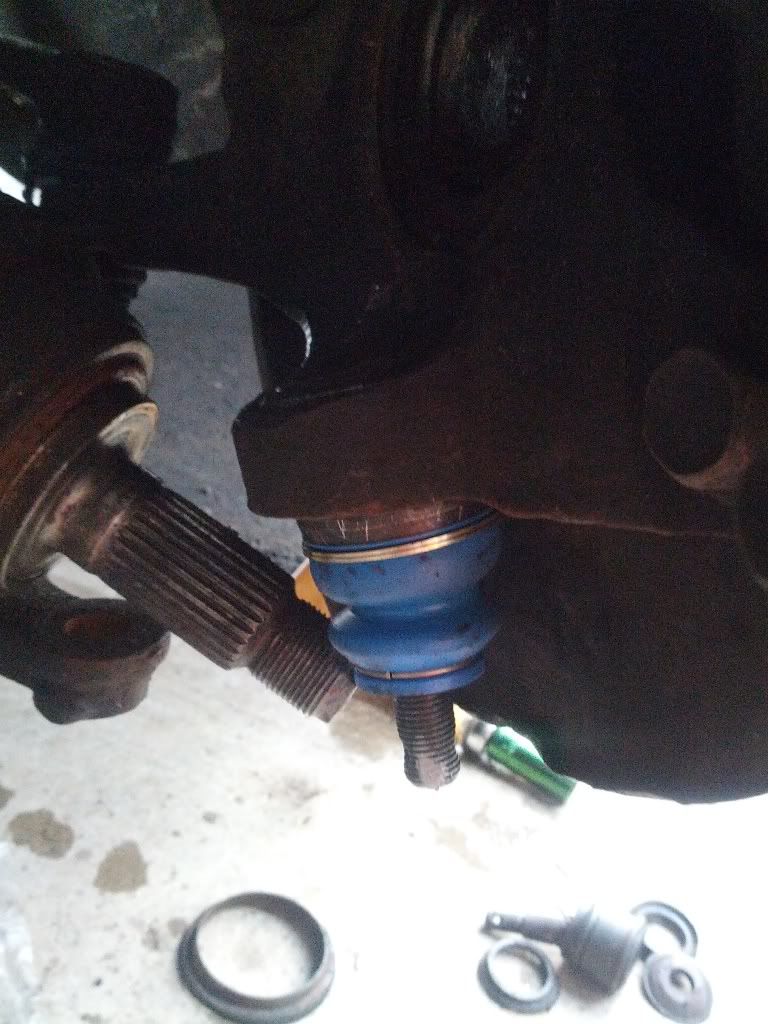
Now I am not so embarrassed and ashamed of my car when I go through neighborhoods and parking lots. I used to squeak and rattle everywhere I went! So far so good!
As previously stated the tool I posted DOES NOT DAMAGE THE BALL JOINT OR BOOT AT ALL. It is the least invasive method I’ve seen to separate a ball joint. The ball joint slides up and down on the joint, this is why it looks huge when not installed and then “mushroomed” once its assembled. The tool slides between the boot and the metal of the part the ball joint goes thru, the boot simply slides out of the way about 1/8" - 1/4" and then the tool separates the two components. There is zero force applied to the boot during the separation process with the exception of the force required to slide the tool into place which is completely normal movement of the boot over the joint.
I just now looked up this Craftsman ratchet method you mentioned. I haven’t tried it but it’s far inferior to the tool I posted. I guess everyone else has had easy to separate ball joints but I’ve had numerous ball joints which wouldn’t budge with any other conventional tools. I wish I would have known about the ratchet thing but I’m almost positive it wouldn’t work for at least some of the ones I’ve had to deal with. Just seems like you wouldn’t be able to get enough leverage on it, but who knows, maybe that technique is better than I’m thinking it would be.
Hey Colin does that work just as good on a tie rod end? Thinking about buying or renting a pickle fork but if that works without damaging the boot then I will have to try that as well.
Pickle fork is liable to damage the joint or boot. Yes, the tool I listed will work on rod end ball joints and your lower ball joints.
I can attest to the Craftsman wratchet handle method, I’ve used it quite a few times… But there have been a few that wouldn’t budge…
It’s good to know multiple methods imo, in case one in particular doesn’t do the job.
Good posts guys.